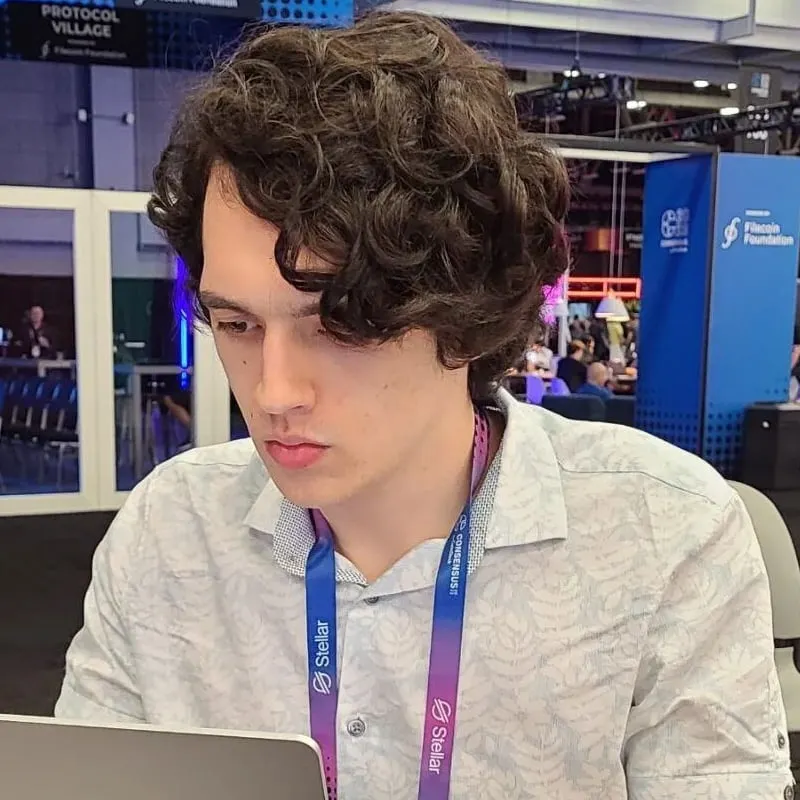Coin Prices
BTC
$89,855.00
-2.33%ETH
$3,102.96
-3.38%XRP
$2.08
-7.34%BNB
$884.28
-2.41%SOL
$134.14
-2.53%USDC
$0.999834
-0.01%TRX
$0.295822
0.18%STETH
$3,101.80
-3.56%DOGE
$0.139957
-5.64%FIGR_HELOC
$1.034
-0.11%ADA
$0.388365
-5.92%BCH
$625.55
-0.77%WSTETH
$3,799.92
-3.43%WBT
$55.88
-2.04%WBETH
$3,375.37
-3.44%WBTC
$89,688.00
-2.10%USDS
$0.999736
-0.01%WEETH
$3,366.98
-3.47%LINK
$13.15
-3.68%BSC-USD
$0.998788
-0.02%XMR
$458.67
2.82%LEO
$9.17
1.82%WETH
$3,102.51
-3.51%XLM
$0.227154
-4.39%CBBTC
$89,848.00
-2.27%SUI
$1.77
-6.61%ZEC
$395.63
-18.82%USDE
$0.998231
-0.14%HYPE
$25.98
-3.54%LTC
$80.65
-2.01%AVAX
$13.80
-4.68%CC
$0.13768
2.22%HBAR
$0.119079
-5.51%SHIB
$0.00000858
-4.25%WLFI
$0.175441
2.94%SUSDS
$1.085
0.53%USDT0
$0.998915
-0.03%TON
$1.84
-1.15%CRO
$0.099876
-5.80%PYUSD
$0.999987
0.01%SUSDE
$1.21
-0.08%DOT
$2.11
-3.16%UNI
$5.47
-6.95%USD1
$0.999316
-0.11%MNT
$0.99185
-5.02%RAIN
$0.00878576
-3.67%M
$1.62
-3.37%TAO
$270.85
-2.50%PEPE
$0.0000061
-7.36%AAVE
$163.60
-4.26%BGB
$3.51
-1.30%XAUT
$4,418.77
-0.39%OKB
$109.30
-3.19%NEAR
$1.68
-4.63%USDF
$0.995523
-0.17%ETC
$12.48
-4.29%JITOSOL
$168.09
-2.59%WETH
$3,101.33
-3.51%ENA
$0.229963
-5.47%PI
$0.207017
-1.70%BUIDL
$1.00
0.00%ICP
$3.12
-5.63%ASTER
$0.708762
-6.27%PAXG
$4,424.50
-0.79%SOL
$134.12
-2.59%HTX
$0.00000168
-0.11%WLD
$0.574212
-7.10%JLP
$4.70
-1.61%USDG
$0.999644
-0.00%USYC
$1.11
0.00%KCS
$11.38
-1.54%SYRUPUSDC
$1.15
-0.01%BNSOL
$146.52
-2.54%SKY
$0.05964
-5.03%POL
$0.128782
0.87%APT
$1.79
-7.06%RLUSD
$0.999499
-0.07%BFUSD
$0.998418
-0.06%USDC
$0.999983
0.04%WBNB
$883.91
-2.50%RETH
$3,582.91
-3.47%ONDO
$0.403803
-7.72%PUMP
$0.0021027
-14.45%KAS
$0.04614799
-7.61%NIGHT
$0.073888
-6.40%HASH
$0.02276847
-14.78%GT
$10.17
-2.69%ATOM
$2.44
1.50%ARB
$0.206393
-5.04%ALGO
$0.1323
-5.30%RSETH
$3,296.14
-3.49%RENDER
$2.12
-11.01%QNT
$74.23
-2.75%FIL
$1.47
-5.87%TRUMP
$5.29
-3.37%WSTETH
$3,782.33
-3.67%VET
$0.01166928
-6.57%FBTC
$89,884.00
-2.45%LBTC
$90,145.00
-2.11%JAAA
$1.021
0.04%SOLVBTC
$89,842.00
-2.07%NEXO
$0.951397
-3.14%MYX
$4.98
-0.40%FLR
$0.01142995
-7.28%XDC
$0.04922022
-4.19%BONK
$0.00001067
-7.90%USDD
$0.998677
-0.05%LSETH
$3,313.54
-3.56%USDTB
$0.999908
0.01%OUSG
$113.89
0.01%METH
$3,368.54
-2.75%SEI
$0.121724
-4.36%WM
$0.999268
-0.00%LIT
$3.08
3.34%USTB
$10.95
0.01%PENGU
$0.01174169
-6.70%USDC.E
$0.999779
0.00%WBTC
$89,624.00
-2.37%CLBTC
$91,310.00
-0.70%EZETH
$3,312.95
-3.56%IP
$2.03
-3.22%USDY
$1.11
-0.22%BDX
$0.08927
-0.16%SYRUPUSDT
$1.11
-0.17%JUP
$0.210524
-5.12%VIRTUAL
$1.024
-6.28%WFLR
$0.01142488
-7.42%USDAI
$0.993679
-0.65%CAKE
$1.93
-2.57%MORPHO
$1.19
-4.38%OSETH
$3,271.73
-3.49%JUPSOL
$155.71
-2.70%WETH
$3,099.87
-3.64%DAI
$0.999897
-0.01%FET
$0.268887
-7.50%STX
$0.334466
-8.08%XTZ
$0.559474
-3.16%CRV
$0.408717
-2.11%KHYPE
$26.23
-3.66%OP
$0.306733
-4.82%EUTBL
$1.22
-0.11%USD0
$0.998158
-0.06%CTM
$0.125184
-3.09%SPX
$0.576258
-5.89%TBTC
$89,641.00
-2.13%LDO
$0.620743
-4.03%WETH
$3,102.72
-3.53%INJ
$5.06
-5.85%FLOKI
$0.00005232
-7.15%GTETH
$3,101.87
-3.47%FDUSD
$0.998692
-0.11%GHO
$0.999015
-0.03%TUSD
$0.99708
-0.07%AERO
$0.538505
-6.31%DASH
$38.07
-9.80%ETHFI
$0.727853
-6.30%FTN
$1.088
0.28%TIA
$0.540673
-7.85%MSOL
$181.08
-2.67%ETHX
$3,345.94
-3.35%LIQUIDETH
$3,323.79
-3.49%CHZ
$0.04424482
2.52%IOTA
$0.102019
-7.59%JST
$0.04364225
3.02%BTT
$0.00000043
-0.10%WAPE
$0.212816
-4.23%GRT
$0.03973427
-3.57%AB
$0.00443344
-0.35%SYRUP
$0.366772
-0.48%STRK
$0.082809
-7.98%JASMY
$0.00824677
-6.67%SBTC
$89,848.00
-1.85%USDB
$0.991672
-1.11%STKAAVE
$163.97
-3.23%CBETH
$3,470.75
-3.52%2Z
$0.115206
-4.28%ENS
$10.36
-5.06%CFX
$0.076248
-4.77%FARTCOIN
$0.392364
-9.46%SUN
$0.02016724
0.55%STEAKUSDC
$1.11
0.00%KAIA
$0.065672
-4.08%BSV
$19.17
-3.92%WIF
$0.38286
-5.70%PYTH
$0.066178
-5.64%TWT
$0.895295
-3.63%NFT
$0.00000037
0.07%GNO
$137.83
-3.37%CRVUSD
$1.001
0.17%EURC
$1.17
-0.03%DOGE
$0.139841
-5.64%XCN
$0.00933204
-0.86%CUSD
$1.001
0.01%TEL
$0.00373684
-5.95%OHM
$21.58
-0.91%PENDLE
$2.10
-6.38%WSTX
$0.35034
-5.64%BTC.B
$89,828.00
-2.38%KAU
$141.86
-0.84%SAVAX
$17.15
-4.66%GALA
$0.00710217
-3.70%XPL
$0.160054
-14.10%S
$0.087385
-7.91%USR
$0.998578
-0.13%WSTUSR
$1.13
0.04%VSN
$0.090161
-1.88%RIVER
$16.14
-10.52%SAND
$0.117117
-5.54%BUSD
$0.997895
-0.14%BAT
$0.207662
-7.08%EETH
$3,098.35
-3.61%PIPPIN
$0.305628
-7.06%WEETH
$3,367.62
-3.42%RAY
$1.13
-5.97%JTRSY
$1.091
0.01%USX
$0.999377
0.01%THETA
$0.297947
-4.59%UBTC
$89,830.00
-2.43%H
$0.160652
1.32%FRXETH
$3,098.02
-3.48%MON
$0.02656759
-4.43%ZK
$0.03314948
-4.24%WETH
$3,101.25
-3.54%HNT
$1.51
-5.07%KAG
$75.24
-5.35%FRAX
$0.993252
0.05%A
$0.171997
-4.92%ZRO
$1.37
-3.66%DCR
$16.04
-7.31%NEO
$3.90
-3.05%CMETH
$3,365.01
-3.18%ASBNB
$938.32
-2.31%GTBTC
$90,032.00
-2.37%GLM
$0.267829
1.98%UDS
$2.60
-0.03%WHYPE
$26.00
-3.61%MANA
$0.137238
-4.99%STABLE
$0.01461985
-3.89%ZBCN
$0.00270295
-7.54%BBTC
$89,855.00
-1.56%WETH
$3,107.03
-3.23%MERL
$0.236838
-4.12%COMP
$26.51
-1.70%MWC
$23.08
-0.05%BORG
$0.255604
-2.08%SUSDAI
$1.063
0.06%WSTETH
$3,798.07
-3.58%BTSE
$1.53
-1.23%
